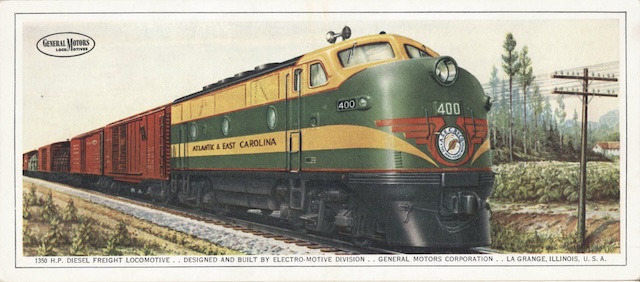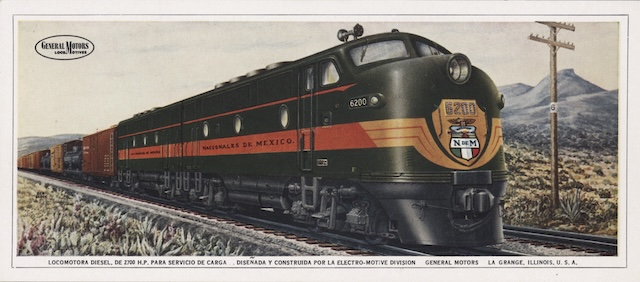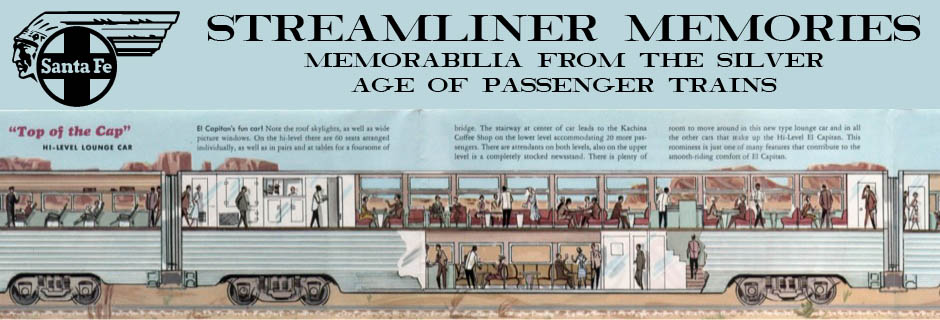A Diesel-electric locomotive consists of a Diesel engine that turns an electrical generator to produce electricity that powers electrical motors to the wheels. In 1945, General Motors had developed a generator capable of upping the FT’s power from 1,350 horsepower to 1,500 and it redesigned the locomotive interior to fit the new generator. However, after having built a four-unit demonstrator in July 1945, the company realized the new generator was not quite ready for mass production. Instead, it offered a locomotive with the new internal layout but the old generator, which it called the F2.

This card is unsigned but is probably by Ben Dedek.
Although nine railroads bought F2s, I have data cards for just two of them. First, the Atlantic and East Carolina Railway, a short line that was eventually absorbed by the Southern, bought two F2s, the one on this data card and sister 401. These were among the first F2s to be built and were delivered in July 1946.

This card is signed by Ben Dedek.
Next is a card, written in Spanish, for Ferrocarriles Nacionales de Mexico (NdeM) 6200. NdeM purchased more F2s than any other railroad, buying 14 A and 14 B units. I’m not sure when this locomotive was made but it was probably after the A&EC 400.
Production of F2 and other GM locomotives had been hampered by a United Auto Workers strike from November 1945 through March 1946, followed by a steel workers strike that ended in April. As a result, though a demonstrator had been built in July 1945, F2s were produced only from July through November 1946. Production of the true 1,500-hp F3 overlapped the F2 slightly as the first ones rolled off the assembly in in October 1946.
